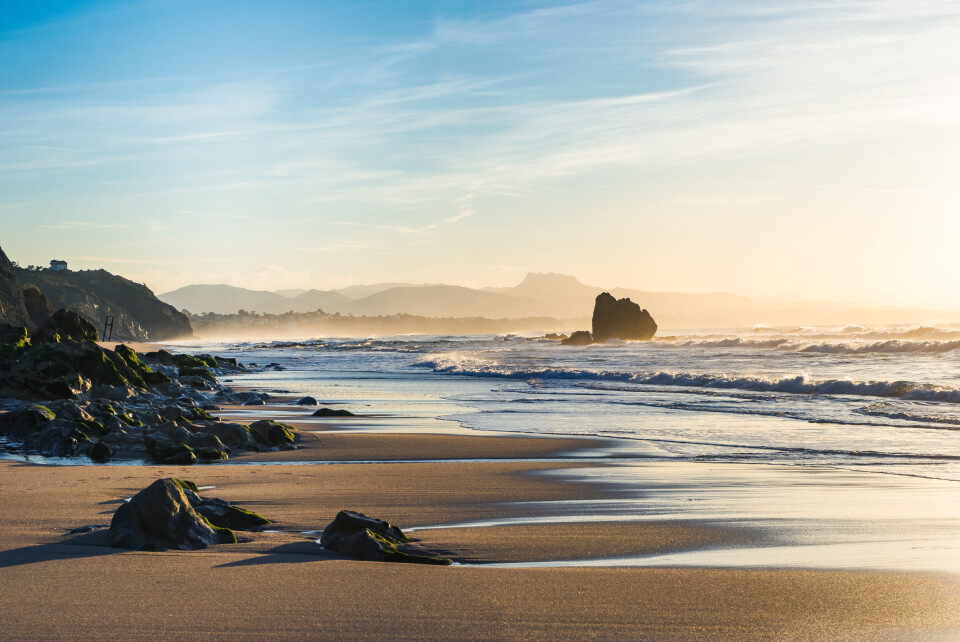-
When my husband dies will I lose access to healthcare in France through his S1?
Settled residents in France can access healthcare through 'Puma' system
-
American celebrity jeweller robbed of ‘more than €1m’ at French Riviera Airbnb
Jewellery and cash stolen from rental property where Chris Aire was staying
-
New 2026 civic tests in France: 50 example questions in French
Candidates must score 80% on tests to pass
Toxic microalgae warning: French hotspots, symptoms and how to treat
The microalgae, whose presence on French coastlines is expanding, has caused 900 poisonings since 2021

France’s food safety and environmental agency has issued a warning about a toxic microalgae increasingly present on the country’s coastlines that can cause flu-like symptoms, stomach upsets and skin irritations.
Anses (l’Agence nationale de sécurité sanitaire de l'alimentation, de l'environnement et du travail) is warning people visiting and working near France’s coasts this summer to be aware of this algae, whose official name is ostreopsis.
What is it?
Ostreopsis is a tropical algae which arrived in the Mediterranean around 20 years ago. About two years ago it started appearing on the Basque coast and this year it has been seen further up France’s Atlantic seaboard.
It tends to develop in summer when sea temperatures surpass 20C.
Surfrider Foundation Europe says the warming oceans have likely contributed to the development of ostreopsis and the colonisation of new regions of the globe such as the western Atlantic coast or the Mediterranean Sea.
Why is it a problem?
Ostreopsis can poison humans and wildlife. It deprives marine life of oxygen and can kill sea urchins and limpets. It can also make sea urchins lose their spikes.
Anses say it has caused 900 intoxications since 2021 and that its presence on French coastlines is expanding.
How do you recognise it?
It can form algae “blossoms” on the surface of the sea or ocean. These blossoms cause brown patches which can be up to several metres square. However, these patches can disappear quickly and just because you can not see anything does not mean ostreopsis is not present.
The only definitive sign it is present is a metallic taste in the mouth, present even if you have not swallowed any water.
Read More: Worries over fish and ecosystem as Mediterranean sea set to reach 30C
How do you catch it?
While ostreopsis can be swallowed in seawater, the main way people are exposed to it is by inhalation, or breathing in the spores it generates. As a result, you can catch it even if you are not in the water, but merely standing a few metres away from it.
There are reports outside of Europe of people getting sick after eating contaminated food, but there is no confirmed link. The authorities therefore recommend not eating shellfish or other seafood if ostreopsis is detected in the area.
Fish is safe if disembowelled before eating as the toxins accumulate in the digestive tract.
It is also recommended that you take a shower after returning from the beach. However, authorities do not recommend wearing a mask to protect yourself as masks get damp quickly upon contact with the sea air which significantly reduces its ability to filter the air.
What are the symptoms and how do you treat them?
Ostreopsis can cause various symptoms including flu-like symptoms, skin irritation and stomach upsets. It can also cause coughs and breathing issues. It is unpleasant but not serious unless you have asthma.
Symptoms develop within a few hours of contact and will disappear within a couple of days, according to Nathalie Arnic, an Anses expert.
Unless you have asthma, you can treat it at home. If symptoms get worse, last beyond 3-4 days or you have asthma, visit a doctor.
Which areas of France and which people are most at risk?
At the moment, ostreopsis has been spotted in small quantities along the whole of France’s Atlantic coast, with authorities expecting it to become more widespread as the temperatures increase.
The authorities are paying particular attention to the Nouvelle-Aquitaine region, around Bordeaux and down the Basque coast to the Spanish border. However, it has already been spotted in Brittany.
People who are in close contact with the sea or the coast are most at risk, especially as continued exposure can make symptoms worse. Anses has told professionals such as lifeguards and waiters in coastal restaurants to report any symptoms to workplace doctors.
Anses is also recommending water checks be carried out more regularly to monitor the situation. At the moment, local authorities check the water for bathing once every two weeks, but the agency wants this to become weekly, or even daily.
Related Articles
Brittany beaches find way to measure levels of green algae toxicity
























